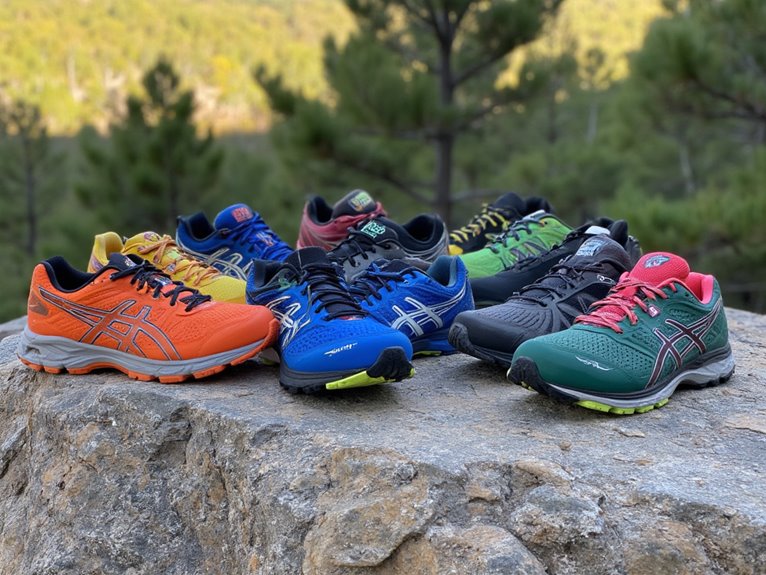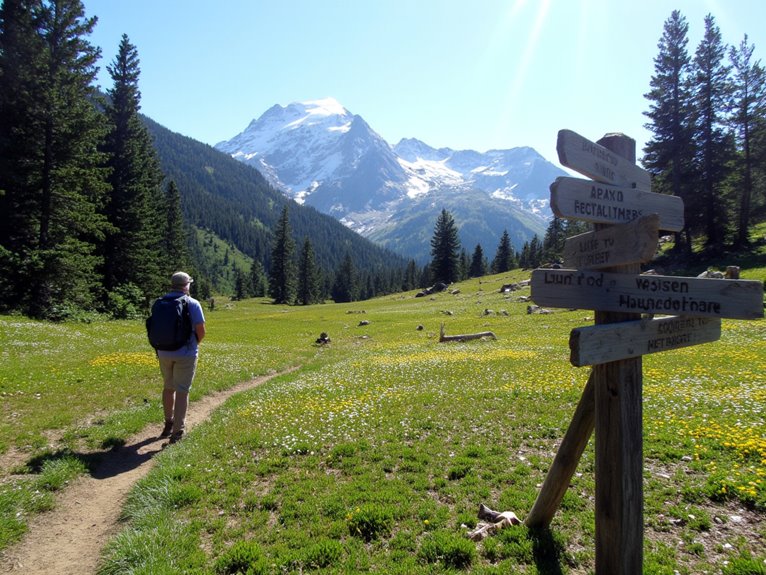What Are the Disadvantages of Gore-Tex Shoes?
While Gore-Tex shoes offer exceptional waterproofing and breathability, they also have several drawbacks. The membrane can compromise flexibility, leading to stiffness and discomfort. The shoes may not be ideal for high-range motion activities and can be prone to blisters. Limited breathability in warm weather can cause hot, sweaty feet. Additionally, Gore-Tex shoes can be costly, with fragile seam construction and questionable durability. They can be bulkier and heavier, affecting style and aesthetic appeal. Noise and squeakiness issues can also be a problem. There's more to uncover about the disadvantages of Gore-Tex shoes, and exploring these points further can provide a clearer understanding of their limitations.
We are supported by our audience. When you purchase through links on our site, we may earn an affiliate commission, at no extra cost for you. Learn more. Last update on 7th January 2026 / Images from Amazon Product Advertising API.
Limited Flexibility and Stiffness
One of the most significant drawbacks of Gore-Tex shoes is their tendency to be less flexible and stiffer compared to other waterproofing materials, which can make them uncomfortable to wear for extended periods. This limited flexibility can be attributed to the Gore-Tex membrane, which is designed to provide waterproofing and breathability. While it excels in these areas, it can compromise on flexibility. As a result, Gore-Tex shoes may not be the best choice for activities that require a high range of motion, such as hiking or running. Additionally, the stiffness can lead to blisters and discomfort, particularly during the break-in period. Overall, the limited flexibility of Gore-Tex shoes is a notable drawback that should be considered when deciding on a footwear option.
Higher Price Point Compared
Another significant drawback of Gore-Tex shoes is their higher price point compared to shoes made with other waterproofing materials, which can be a significant barrier for many consumers. The advanced technology and high-quality materials used in Gore-Tex shoes come at a cost, making them less accessible to budget-conscious buyers. On average, Gore-Tex shoes can cost anywhere from 10% to 50% more than similar shoes made with alternative waterproofing materials. This price premium can be a significant deterrent for those on a tight budget or looking for a more affordable option. While the benefits of Gore-Tex shoes are undeniable, their higher price point is a significant disadvantage that cannot be ignored.
Questionable Durability and Wear
In terms of Gore-Tex shoes, one of the notable drawbacks is their questionable durability and wear. Specifically, the seam construction of these shoes has been known to be fragile, prone to cracking and separation over time. In addition, the soles of Gore-Tex shoes have also been reported to delaminate prematurely, compromising the overall integrity of the footwear.
Fragile Seam Construction
Despite its reputation for waterproofing and breathability, Gore-Tex shoes often fall short regarding seam construction, which can lead to premature wear and tear. The seams, where the Gore-Tex membrane meets the shoe's fabric, can be prone to cracking and separation. This weakness can allow water to seep in, rendering the waterproofing technology ineffective. Additionally, the fragile seam construction can lead to fraying and unraveling, further compromising the shoe's integrity. As a result, Gore-Tex shoes may require more frequent repairs or even replacement, adding to their overall cost. It's essential to inspect the seams regularly and take preventive measures to minimize damage.
Premature Sole Delamination
Gore-Tex shoes have been known to exhibit premature sole delamination, a issue that raises concerns about their durability and wear, as the bonding between the sole and upper begins to deteriorate unexpectedly early in the shoe's lifespan. This can lead to separation of the sole from the upper, resulting in a compromised waterproofing system and reduced traction. Premature sole delamination can be attributed to various factors, including poor manufacturing, inadequate adhesives, and excessive wear and tear. As a result, Gore-Tex shoes may not withstand the rigors of outdoor activities, requiring more frequent replacements and increased maintenance costs. To minimize the risk of premature sole delamination, regular inspections and proper maintenance of your Gore-Tex shoes are crucial.
Weight and Bulkiness Issues
Carrying a pair of Gore-Tex shoes can feel like lugging around a pair of weights, thanks to their substantial weight and bulkiness. This is due to the waterproof and breathable membrane that adds extra material to the shoe. As a result, Gore-Tex shoes tend to be heavier and bulkier than their non-waterproof counterparts.
Here are some reasons why the weight and bulkiness of Gore-Tex shoes can be a drawback:
- Reduced agility: The extra weight can make it more difficult to move quickly or make sharp turns.
- Fatigue: Carrying around heavy shoes can lead to tired feet and legs.
- Limited packing: The bulkiness of Gore-Tex shoes can make them difficult to pack in luggage or backpacks.
- Style limitations: The added material can affect the overall aesthetic of the shoe, limiting style options.
Limited Breathability in Warm
While the waterproof membrane of Gore-Tex shoes is a major advantage in wet conditions, it can also lead to limited breathability in warm weather, causing discomfort and moisture buildup. This is because the membrane, while allowing water vapor to escape, can still trap warm air and moisture inside the shoe. As a result, feet can feel hot, sweaty, and clammy, leading to discomfort and potential blisters. This limited breathability can be particularly problematic during intense physical activities or in warm climates, where moisture buildup can exacerbate foot issues. It's essential to weigh this trade-off against the benefits of Gore-Tex shoes, especially for users who frequent warm environments or engage in high-intensity activities.
Noise and Squeakiness Complaints
In the realm of Gore-Tex shoes, one often overlooked drawback is the noise and squeakiness that can accompany wear. This issue can manifest in two primary ways: squeaky soles that announce every step, and noisy footsteps that can be distracting or even embarrassing. In the following section, we'll examine these issues in greater detail, exploring the causes and consequences of these annoying sounds.
Squeaky Soles Problem
One common grievance among Gore-Tex shoe owners is the annoying squeakiness that can emanate from the soles, particularly when worn on smooth surfaces or during wet conditions. This issue can be frustrating, especially for those who value a quiet and discreet walking experience. There are several reasons why Gore-Tex shoes may exhibit squeaky soles, including:
- Insufficient tread wear: Worn-out treads can cause the soles to squeak as they flex and move.
- Moisture accumulation: Trapped water or moisture in the shoes can lead to squeaky sounds.
- Inadequate sole material: The type of material used for the soles may be prone to squeaking.
- Poor manufacturing quality: Defects in the manufacturing process can cause squeaky soles.
Understanding these factors can help you take steps to minimize the squeakiness of your Gore-Tex shoes.
Noisy Footsteps Issue
The noisy footsteps issue, a perennial complaint among Gore-Tex shoe owners, stems from the shoes' propensity to produce excessive noise and squeakiness with every step, often drawing unwanted attention and disrupting the wearer's sense of discretion. This issue is particularly problematic for individuals who require stealth, such as hunters, outdoor enthusiasts, or those who work in quiet environments. The noise and squeakiness can be embarrassing and frustrating, especially when trying to move quietly. Unfortunately, the waterproof and breathable membrane that makes Gore-Tex shoes so effective at keeping feet dry can also contribute to the noisy footsteps issue. While some may find ways to mitigate the noise, it remains a significant drawback for many Gore-Tex shoe owners.
Style and Aesthetics Limitations
Many outdoor enthusiasts are drawn to Gore-Tex shoes for their exceptional performance, but often find themselves compromising on style and aesthetics. While Gore-Tex shoes excel in terms of functionality, they often lack in terms of style and visual appeal. Here are some style and aesthetics limitations to consider:
- Bulkier design: Gore-Tex shoes tend to be bulkier and heavier due to the waterproof and breathable membrane, which can make them less appealing to those who value sleek designs.
- Limited color options: Gore-Tex shoes often come in more subdued colors, which may not appeal to those who prefer brighter or bolder hues.
- Less stylish silhouettes: The functional design of Gore-Tex shoes can result in less stylish silhouettes, which may not be suitable for casual or dressy occasions.
- Less fashionable materials: The use of synthetic materials and membranes can make Gore-Tex shoes appear less fashionable compared to shoes made from natural materials.




